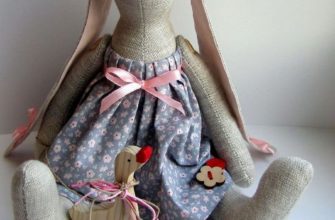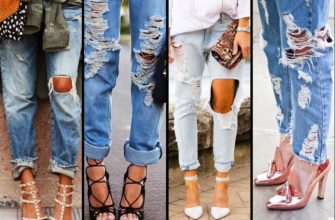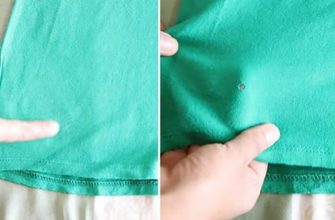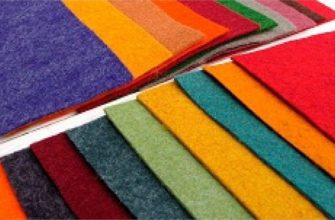The most comfortable outfit for sleeping is considered to be pajamas. The clothes are comfortable both in winter and in summer. It is difficult to choose the right material for sewing pajamas. How to sew pajamas? The article describes in detail the main models, as well as the features of the suit pattern.
Model selection
How to sew pajamas with your own hands for beginners using a pattern? Before starting the sewing process, you need to decide on the model of pajamas. The choice is influenced by the body type and personal preferences of the person.

Please note! For a beginner seamstress, simple models are suitable, the sewing of which consists of creating several lines.
Types of models:
- Short shorts. Suitable for sleeping, and also has the appearance of a suit, suitable for cozy home evenings. Ideal for the summer season, because the girl will not feel discomfort from the heat in the room. Products made of silk, satin produce a cooling effect.
- Long pants. The model is also suitable for going out to an event. It is especially suitable for girls with large shapes, as it hides flaws. Stylish pajamas with an interesting color scheme are suitable for bachelorette parties, themed photo shoots.
- With a T-shirt. This type is recommended to choose if you want to make the image more seductive, lace is also sewn to the top - this will add charm to the set.
- With a T-shirt. The casual model goes well with long pants.
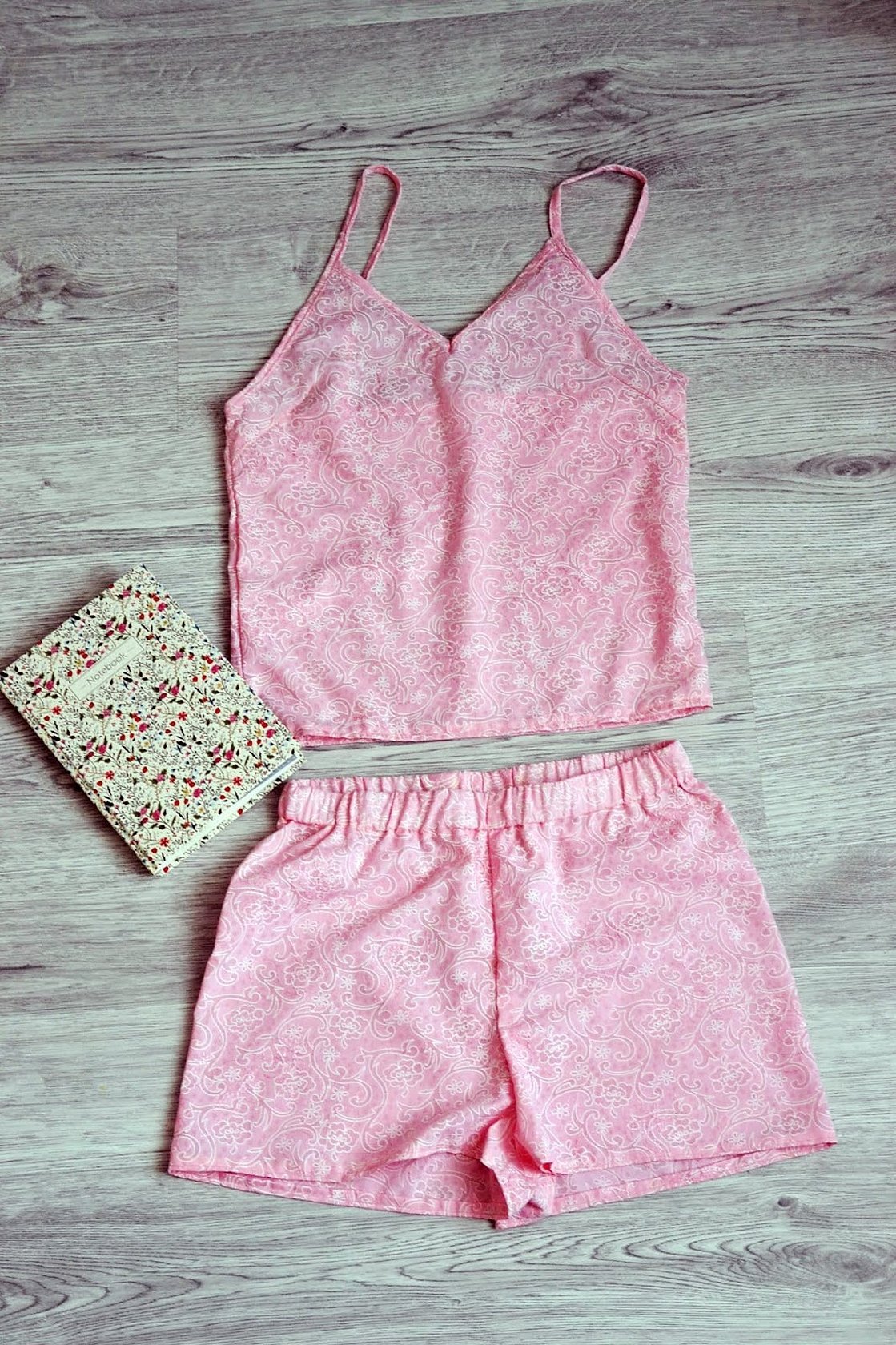
Choosing Materials for Pajamas
Before you start sewing nightwear, you need to choose the type of fabric.
Additional information! You need to buy an elastic band - width 0.5 m, length depends on the waist size. You can also buy lace in the form of a ribbon - width 5 cm, length from 1 meter.
Product material:
- Natural fabrics will help to pass air to the body, will contribute to the creation of comfort for the girl. The product from this material meets hygienic requirements, does not cause irritation, unpleasant sensation. For example, cotton, flannel. The pajamas will look great after washing and will not lose the original color. As a result, the woman gets soft, pleasant pajamas without puffs, pellets. When the fabric contains 7-10% elastane, the thing has all the properties of the dominant material.
- Synthetic fabrics have natural, bright colors, which attracts the fair sex. For example, silk will provide a pleasant tactile sensation. The appearance, despite the primitive cut, speaks of nobility, high cost of the product. It is especially suitable for the summer period, since the fabric does not retain heat. The disadvantage is that skin irritation may occur.
Important! There is no need to use 100% natural fabrics for sewing. A small amount of synthetic fibers will make the item more practical and help it keep its shape.
The choice of fabric depends on the season, as different seasons require different density and heat retention properties from clothing.
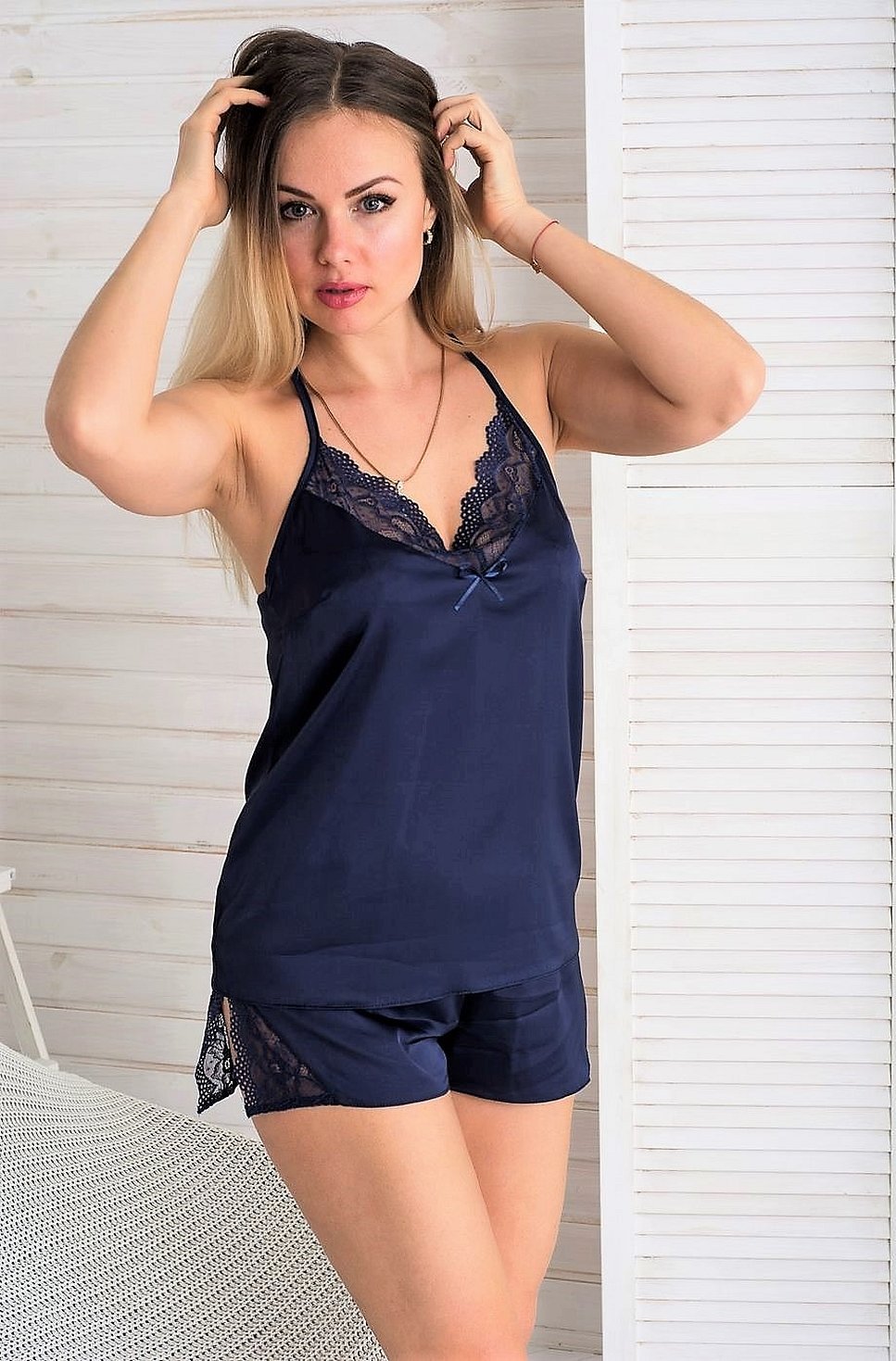
Taking measurements
Before constructing a pattern diagram, it is necessary to carry out the procedure of taking measurements.
Please note! It is not recommended to take measurements yourself.
When modeling a pattern, the following parameters are taken into account:
- chest circumference - OG, through the protruding points parallel to the floor around the body;
- waist circumference - WC, measured at the narrowest part of the waist;
- hip circumference - HC, select the most protruding points on the buttocks and take measurements;
- chest height - CH, from the slope of the shoulder down to the most protruding point;
- back height - BC, from the beginning of the neck to the waist;
- shoulder length;
- shoulder circumference - OC, measured with the arm down;
- sleeve length;
- shoulder width - ШП;
- length of the product.
Measurements are taken using a measuring tape. Rules:
- They shoot from the right side of the body.
- First measure the girths, then the lengths.
- The man stands upright in light clothing.
- The waist is girdled with a cord in advance.
- The tape does not tighten or loosen.
- The diagram is built on half of the figure.
- “C” is a half-girth sign.
- The length is written in full, designated by the letter "D".

Pajama patterns
The pattern for pajamas consists of the upper and lower parts. The first is a T-shirt, a vest.
The T-shirt is sewn from a one-piece front, back, and 2 sleeve parts.
The diagram shows half of the back, front and sleeve. When cutting, the diagram is placed on the fold of the fabric. The sleeve when unfolding the pattern.
After taking correct measurements according to all the rules, the seamstress can begin to create the pattern.
T-shirt pattern
Paper diagram of the back:
- At the top right is the VPT point, 2.8 cm down from it, to the left is OS/4.
- From the last point obtained, put the SP to the left, then down 9 cm.
- Down from the point VPT measure DI, then to the left from the obtained point OB/4.
- From VPT down VG, then to the left OG/4.
- From VPT down BC, to the left OT/4.
Connect the above points, the neckline, the bottom, the shoulder and the side using a pattern, the rest is straight. The front is constructed similarly to the back. The difference is the depth of the neckline.
Sleeves:
- From the VPT, put DR down, OP/2 to the left.
- From VPT down 14 cm, to the left OP/2.
Connect the dots, the sleeve cap is connected using a pattern.
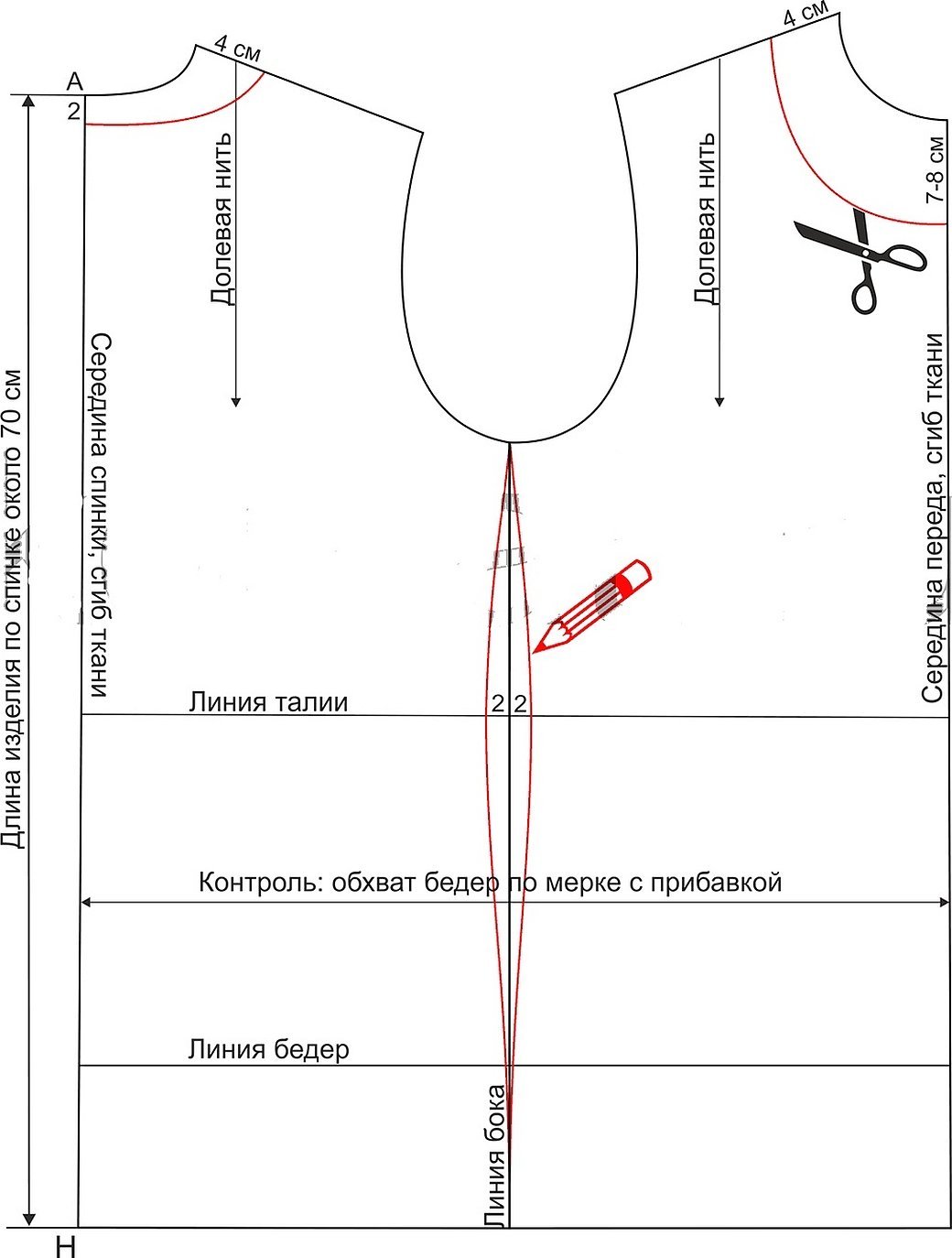
Pajama pants pattern
The pattern is based on the following measurements:
- OT – 74 cm;
- OB – 109 cm;
- DI of trousers – 100 cm;
- knee height 54 cm;
- ankle circumference – 37cm;
- knee circumference – 47 cm;
- "saddle" - 63 cm.
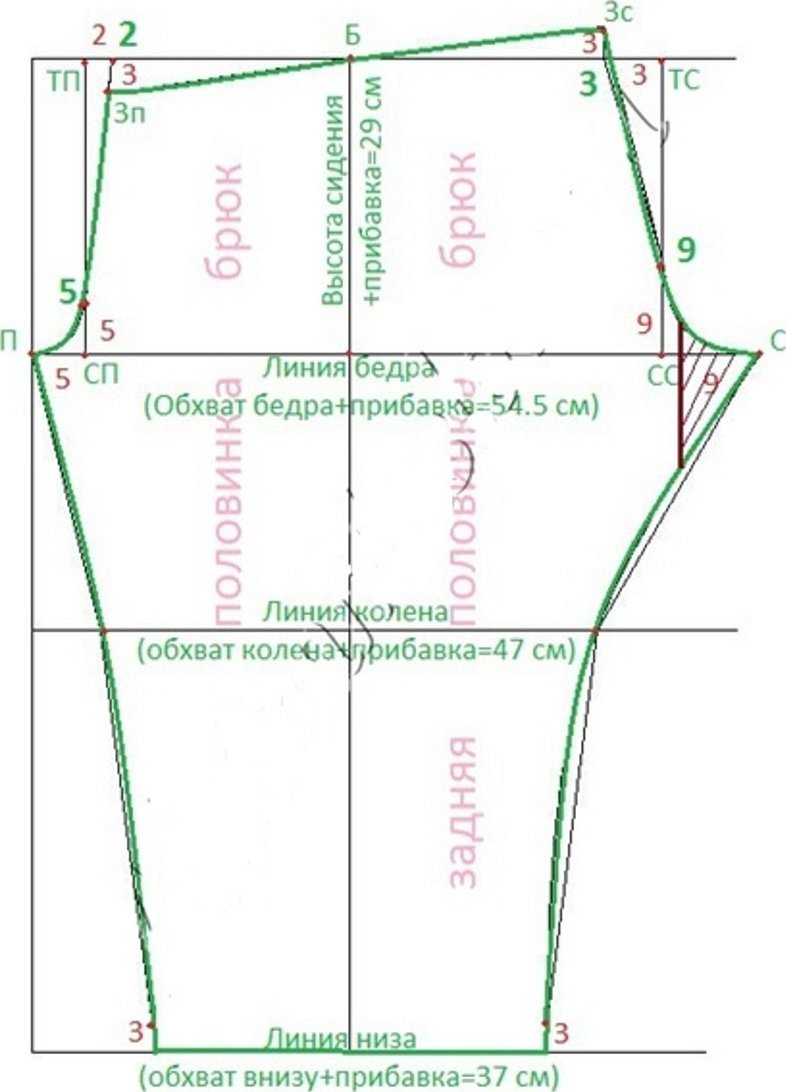
Step by step instructions:
- Align the cut using a square.
- Measure a 3 cm allowance at the bottom and draw a line.
- From the drawn line, put DI upwards and draw a horizontal line from beginning to end.
- Perform calculations: OB/2, to calculate the length of the wedge, divide by 3.8 (according to the given parameters, you get 14 cm). Divide the number by 3 (you get 5 cm). This is the wedge of the back half.
- Measure the height of the seat from the top point, add allowance, draw a horizontal line.
- From the extreme left point, measure 2 cm - allowance for point P, then from the point to the right, the front wedge.
- From point SP, a vertical line upwards at the intersection with the horizontal point TP.
- From point SP to the right OB/2, add allowance, place point SS.
- From point CC, a vertical line upwards, at the intersection point of point TC.
- From point CC to the right, the width of the rear wedge.
- Measure the distance from point SP to point CC, divide by 2, move the ruler to the left by 2 cm, draw a vertical line.
- From point TP to the right 2 cm.
- From point TC to the left 3 cm. From point CC up the width of the back wedge. Connect the dots.
- Compare the size of the "saddle" on the diagram and its measurement.
- Draw the waist line.
- Measure the height of the knee, draw a horizontal line. To the right, to the left, put aside half the knee circumference with an allowance.
- Measure half the ankle circumference to the right and left along the bottom from the side seam. Draw a vertical line 3 cm up from the dots.
- Shape the front and back crotch seam.
- Seam allowances 1.5 cm, waist 1 cm.
Thus, the pattern of the pants is ready. The pattern of women's pajama pants with elastic is similar.
Additional information! When combining the pattern of pants and a T-shirt, you get a kigurumi, a jumpsuit.
How to make a pattern for pajama shorts
The patterns for shorts consist of 4 parts: 2 front halves of the product, 2 back halves of the item. When modeling, allowance is 1 cm on the side, 3 cm at the bottom. Add 5 cm on top of the belt, then fold it over, insert the elastic.
You can also use shorts from your personal wardrobe. Fold them along the seam, put them on paper, and trace the product. To adjust the width and length, add 3 cm.
For shorts with elastic, sew a product that is loose at the waist. Therefore, add width and height to the elastic.
Instructions:
- Cut out the pattern, fold the fabric in half, and attach it to the side of the future item.
- Trace, add 2 cm allowance.
- Fold in with the right sides facing in.
- Sweep the seams.
- Make a stitch on a sewing machine.
- Attach the elastic band.
- Finish the bottom with tape.
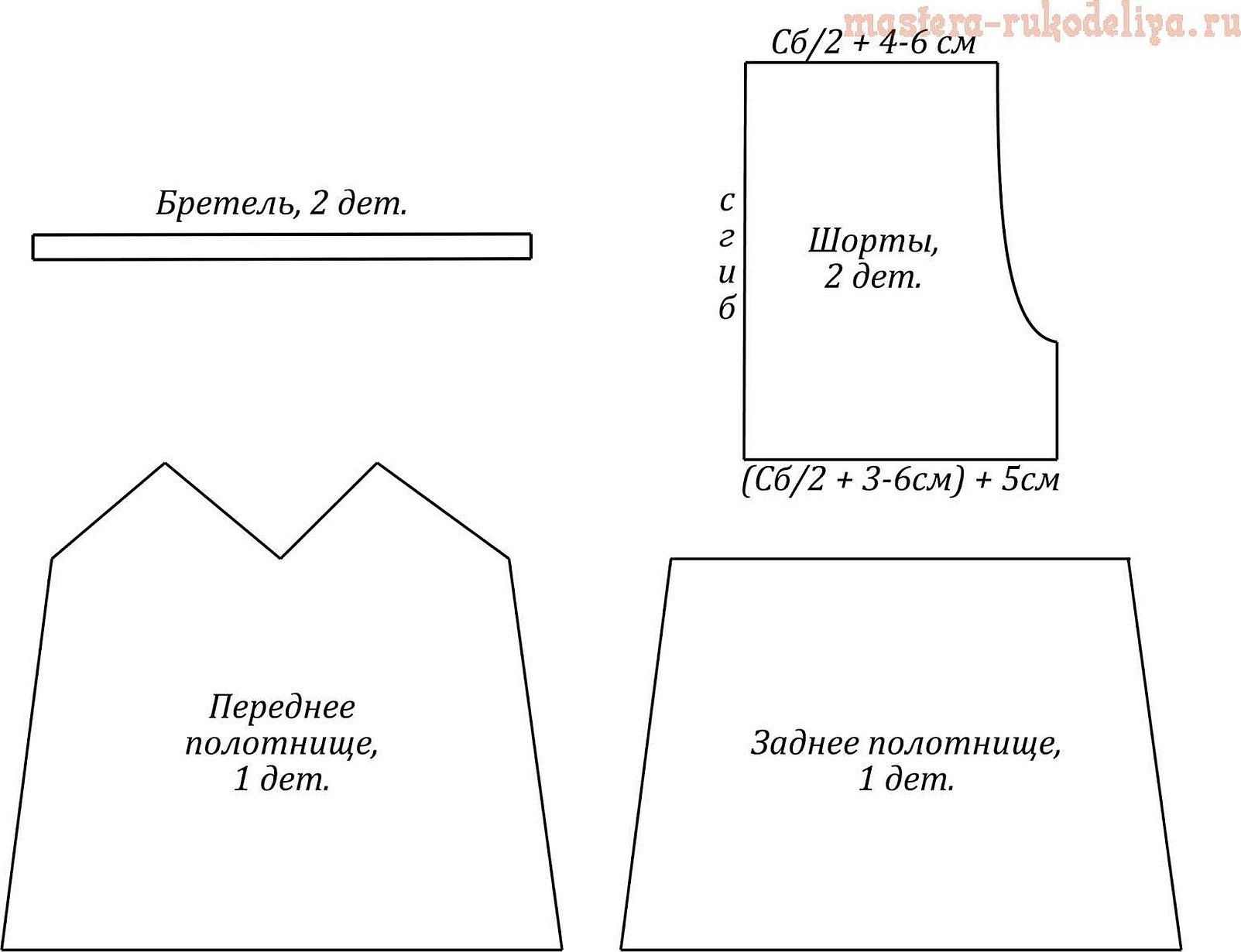
Cutting out the fabric
After taking measurements and modeling the pattern, you need to start cutting out the material.
Important! Before cutting the material, iron the fabric on the surface from the inside. You also need to wash the item, so the girl will avoid the shrinkage process. The water temperature is equal to the one at which the item is washed further.
You can pre-wash a 15x15 cm piece of fabric.
Cut out the drawings along a clear outline drawn on paper. Then lay them out on the fabric, mark the lines, cut out the parts.
T-shirt cutting:
- Fold the fabric right sides together. Place the design on the fold and trace it with a pencil or chalk.
- Add 1.5 cm seam allowance to all sides. Trace again with allowance.
- The front is cut out using a similar pattern.
- The sleeves are cut in a mirror image to obtain symmetrical parts. The sleeve allowance is 4 cm.
Shorts:
- Fold the material, apply the outline of half of the front part of the product. Trace with chalk or pencil.
- Add 1.5 cm allowance to each cut. Trace again with allowance.
- Cut out the back.
- Cut out 2 cuffs.
When modeling parts, make the same allowances and do not outline the contour once.
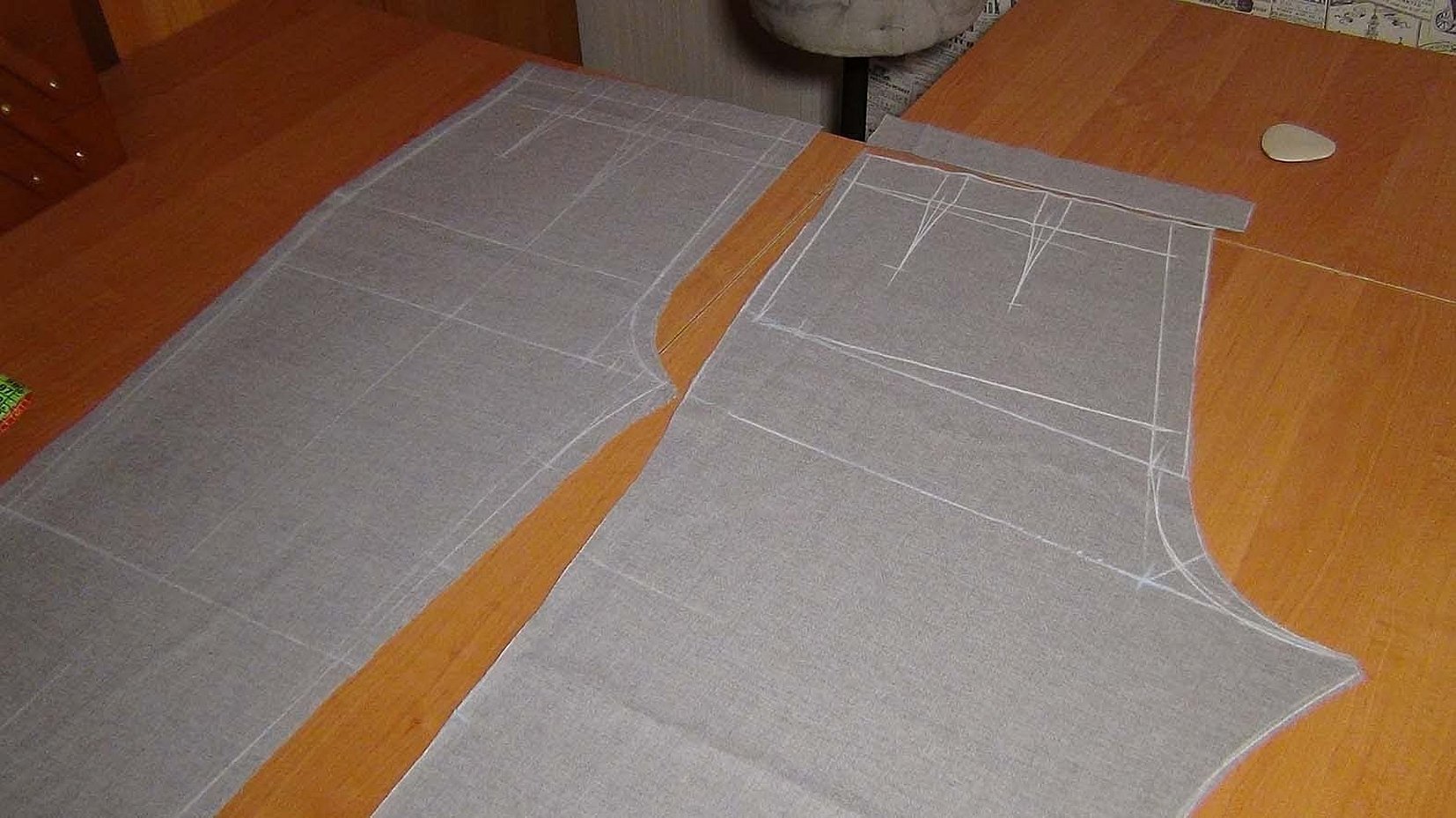
Assembly of the product, seam features
Before sewing shorts, the product is stitched:
- Sew the front and back halves of the shorts on the sides.
- Sew the inside seam to make half of the item.
- Perform similar actions with the other 2 parts.
- Connect the pieces along the center seam.
- Turn the item inside out, fold the bottom and waistband.
- Insert an elastic band into the waistband.
Assembling the upper part:
- Take the front and sew the darts.
- Connect front, back.
- Flash.
- Sew on straps and sleeves.
- Hem the clothes, finish the bottom.
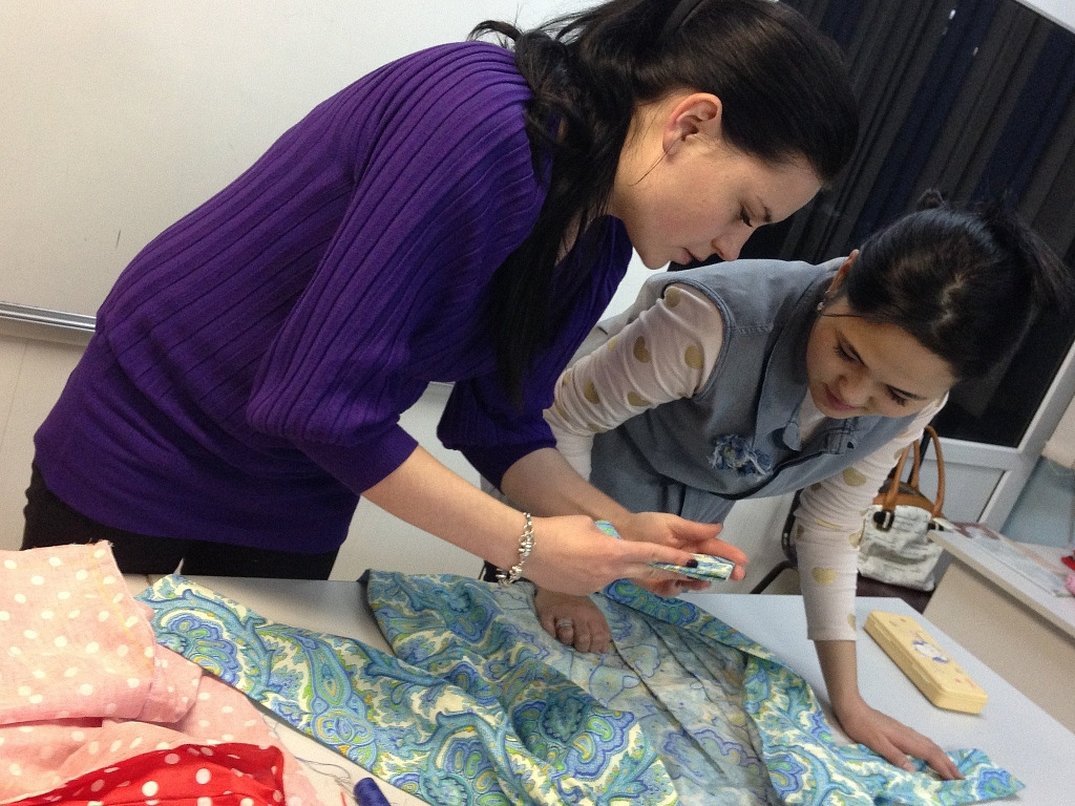
After which both parts of the pajama suit are decorated with lace.
The sewing department uses more than 10 types of seams. Straight and zigzag seams are common. Types of modern seams on a machine:
- straight line left, right;
- quilting;
- lines for overcasting buttonholes;
- triple zigzag;
- overlock: home, thin, double, knitted;
- hidden bottom seam;
- patchwork line;
- double, triple Christmas tree.
There are also hidden seams, they stitch layers of fabric unnoticed. Invisible on the front side of the product, so they will not spoil the appearance. For example, shorts, a T-shirt, pants. This type of seam is hidden among the cuts of material. Beginner seamstresses are advised to practice on fabric trimmings, as this is a complex type of stitching that will not work the first time. It is used to process thin material, its lower part.
Overcasting stitch - holds the threads of woven fabrics to prevent them from coming apart. Without such a stitch, the edges of the fabric turn into fringe. This type of stitch, made by hand, is called a loop stitch. But a sewing machine will perform the overcasting procedure better and faster than a person.
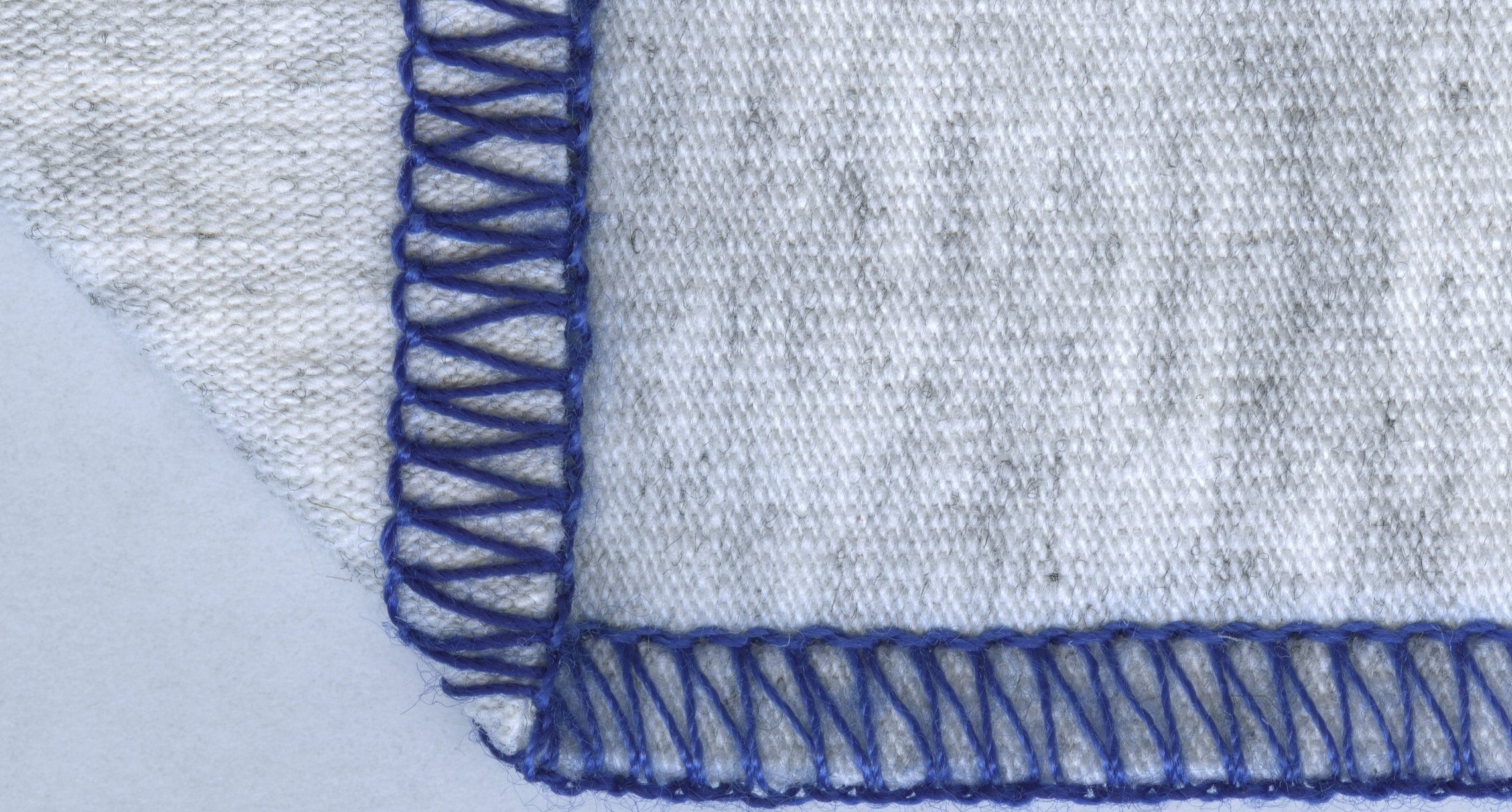
Thus, the main models of products, features of patterns, and seams are presented above. The pattern of children's pajamas is made similarly to the described methods. You can also cut out a pattern for boys, a child, men's pajamas and even for dolls. The article will especially help a novice seamstress.

